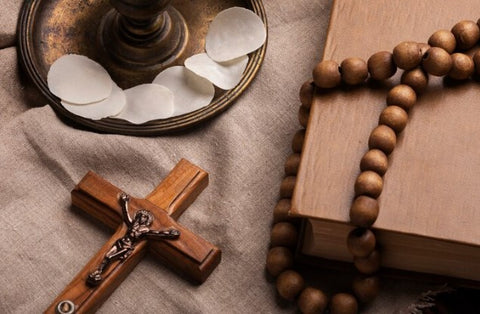Last Updated on June 28, 2025 by Muhammad Ramzan
Orthodox Christianity, often referred to as Eastern Orthodoxy, is one of the oldest expressions of the Christian faith. Rooted in the early teachings of the Apostles and the traditions of the undivided Church, Orthodox Christianity represents a continuous living tradition that has remained largely unchanged over the centuries. For those seeking a deeper understanding of what it truly means to be an Orthodox Christian, it is essential to explore the spiritual, theological, and liturgical dimensions of this ancient faith.
Foundation in Scripture and Tradition
Orthodox Christianity is built on two pillars: Holy Scripture and Holy Tradition. While Scripture holds a place of utmost importance, Orthodox Christians also honor the teachings of the Church Fathers, the decisions of the Ecumenical Councils, and the lived experience of the Church through the centuries. This balanced approach preserves the fullness of the Christian faith as it was handed down from the Apostles.
In Orthodox theology, salvation is not merely a legal transaction but a transformational process. Known as theosis or deification, this process is about growing in union with God, becoming more like Him through grace. This understanding of salvation deeply influences the Orthodox spiritual life, emphasizing humility, repentance, prayer, and participation in the Sacraments.
Worship as Heaven on Earth
A defining aspect of being an Orthodox Christian is participation in the liturgical life of the Church. Orthodox worship is rich in symbolism, music, and ritual, designed to reflect the heavenly reality. The Divine Liturgy, especially that of St. John Chrysostom, serves as the primary worship service, where the faithful gather to receive the Holy Eucharist.
One of the most powerful elements in Orthodox worship is the use of orthodox incense. The fragrant smoke rising to heaven symbolizes the prayers of the faithful ascending before the throne of God. Incense is also a reminder of the presence of the Holy Spirit and is used to bless the altar, icons, clergy, and congregation during services. This sensory aspect of worship helps believers engage their whole being in prayer and reverence.
The Role of Icons in Orthodox Faith
Orthodox Christians venerate, but do not worship, orthodox icons—holy images of Christ, the Theotokos (Mother of God), and the saints. Icons are considered “windows to heaven” and serve as visible reminders of the invisible realities of the Kingdom of God. They are used not only in churches but also in the homes of the faithful, where they become focal points for personal prayer.
Icons teach theology through images, offering a glimpse into the divine. The careful and symbolic way in which icons are written (not painted) reflects a sacred tradition handed down through generations. For Orthodox Christians, engaging with icons is a way to connect more deeply with the spiritual truths of the faith.
Sacraments and Community Life
The sacramental life is central to Orthodox Christianity. There are seven primary sacraments—Baptism, Chrismation, Eucharist, Confession, Matrimony, Holy Orders, and Unction—but the Church also views many other acts, like prayer and fasting, as sacramental. These holy mysteries are seen as direct encounters with God’s grace, drawing the believer closer to Him.
Community and fellowship are also vital aspects of Orthodox Christian life. The Church is not merely a building but a living body—the Body of Christ. Each member plays a role in the spiritual growth of the whole, and love for one another is seen as evidence of faith. Whether it’s through parish festivals, fasting seasons, or mutual support in times of need, the Orthodox community provides a strong sense of spiritual family.
A Life of Prayer and Repentance
Orthodox Christians are called to a daily life of prayer, fasting, and repentance. The Jesus Prayer—“Lord Jesus Christ, Son of God, have mercy on me, a sinner”—is often repeated as a way to center the heart and mind on God. The Church calendar guides the rhythm of Orthodox life through feasts and fasts, offering structure to the believer’s spiritual journey.
Repentance is not seen as guilt-driven shame but as a path to healing and renewal. The Sacrament of Confession provides an opportunity for believers to reconcile with God and receive the strength to continue on the path of transformation.
Conclusion: A Living Faith
To be an Orthodox Christian is to embrace a holistic and deeply spiritual way of life. It is not simply a set of beliefs but a lived experience, centered on the person of Jesus Christ and sustained through the sacraments, community, and tradition of the Church. Through practices like the veneration of orthodox icons and the use of orthodox incense, believers connect with the sacred and eternal, drawing ever closer to God.
Whether born into the tradition or discovering it later in life, those who follow the Orthodox path often describe it as coming home—a return to the roots of Christian faith, alive with beauty, reverence, and truth.










